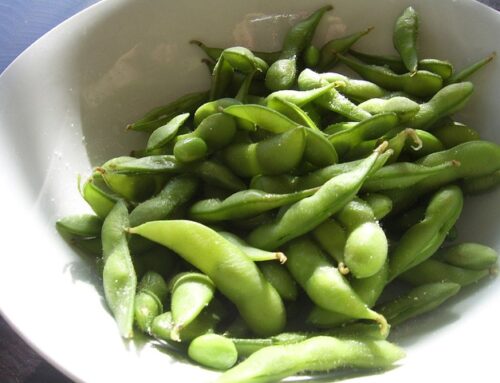
Comfrey an amazing plant
Comfrey is classified as an herb. It stands out from all other herbs that its leaves has the highest concentration of protein of all vegetables. High concentration of calcium (Ca), potassium (K), vit A, C and very importantly Vit B12. It has a significant tap root that can reach 3m in deep soils from which it taps all the water it needs. So if you have a shallow water table, it can survive with little irrigation water. Both leaves and roots contain high concentrations of allontoin which encourages sell division. Allontoin is the active ingredient that helps with ulcers, broken bones and any superficial cuts.
There is a long history of using comfrey as a therapeutic herb. Studies have shown that comfrey preparations are safe and effective when applied topically to relieve pain, inflammation, and swelling of the muscles and joints in degenerative arthritis, acute myalgia in the back, sprains, contusions, and strains following sports-related injuries and accidents, as well as in children three or older 1 A survey of UK practitioners showed that comfrey can safely be used for external application on sore tendons, ligaments, muscle problems, fractures and non-bleading wounds. Comfrey was not effective on haemorrhoids, varicose veins and boils. Using comfrey for ulcars, open wounds and boils is considered dangerous 2
There is a perception that that if comfrey is consumed in very small quantities, the risk of veno-occlusive disease will be averted. However research data indicates there is still a significant risk even at low concentrations 3. The skin absorbs pyrrolizidine alkaloids (PAs) at 0.04 – 0.22% the rate of intestines. That is why it will always be safer to apply comfrey products such as creams externally 4 The results showed that comfrey root extract ointment is well suited for the treatment of osteoarthritis of the knee. The patients pain was reduced, knee mobility improved and quality of life increased. 5
Researchers are investigating the potential of using comfrey leaves to supplement protein in broiler chickens with very positive results 6 So the high proteien content of Comfrey is not lost and there are ways and means to utilize this scarce resource.
The main liver injury caused by comfrey (Symphytum officinale ) is veno-occlusive disease, a non-thrombotic obliteration of small hepatic veins leading to cirrhosis, put it simply, obstruction or compression of small veins, and eventually liver failure 7 Confrey is dangerous, especially when field crops are contaminated and used for animal feed, no wonder Canada and Germany have banned commercial comfrey production.
Confrey (Symphytum sp.), a member of the Boraginaceae family of herbs, is consumed as a tablet, tea, or salad vegetable. There companies that claim comfrey has high Vit B12 and thus market their suplements accordingly, however, it is proven that Comfrey has very low Vit B12 content. So in order to suplement a Vit B12 deficiency, one would need to consume relatively large quantities of these goods. The ingestion of such quantities would be concerning due to the possible health risk connected to comfrey 8
I don’t see a problem if people plant comfrey in their gardens. I mean, how many plants are planted in residential environments. The problems start when farmers plant comfrey on a large scale close to open field crops used for animal feeding.
Featured image by . Kathy Büscher from Pixabay.
References
- Staiger, Christiane. (2012). Comfrey: A Clinical Overview. Phytotherapy research : PTR. 26. 1441-8. 10.1002/ptr.4612.
- Frost, Rachael & o’meara, Susan & Macpherson, Hugh. (2014). The external use of comfrey: A practitioner survey. Complementary therapies in clinical practice. 20. 10.1016/j.ctcp.2014.07.003.
- Abbott, Peter. (1988). Comfrey: Assessing the low-dose health risk. The Medical journal of Australia. 149. 678-82. 10.5694/j.1326-5377.1988.tb120821.x.
- Jedlinszki, Nikoletta & Balázs, Boglárka & Csányi, Erzsébet & Dezső, Csupor. (2017). Penetration of lycopsamine from a comfrey ointment through human epidermis. Regulatory Toxicology and Pharmacology. 83. 1-4. 10.10165/j.yrtph.2016.11.015.
- Grube, B & Gruenwald, Joerg & Krug, L & Staiger, Christiane. (2007). Efficacy of a comfrey root (Symphyti offic. radix) extract ointment in the treatment of patients with painful osteoarthritis of the knee: Results of a double-blind, randomised, bicenter, placebo-controlled trial. Phytomedicine : international journal of phytotherapy and phytopharmacology. 14. 2-10. 10.1016/j.phymed.2006.11.006.)
- Oster, Michael & Reyer, Henry & Keiler, Jonas & Ball, Elizabeth & Mulvenna, Christina & Murani, Eduard & Ponsuksili, Siriluck & Wimmers, Klaus. (2020). Comfrey (Symphytum spp.) as an alternative field crop contributing to closed agricultural cycles in chicken feeding. Science of The Total Environment. 742. 140490. 10.1016/j.scitotenv.2020.140490.
- Stickel, Felix & Seitz, Helmut. (2001). The efficacy and safety of comfrey. Public health nutrition. 3.
- Briggs, D.R. & Ryan, K.F. & Bell, H.L.. (1983). Vitamin B 12 Activity In Comfrey ( Symphytum Sp.) And Comfrey Products. Journal of Plant Foods. 5. 143-147. 10.1080/0142968X.1983.11904285.



